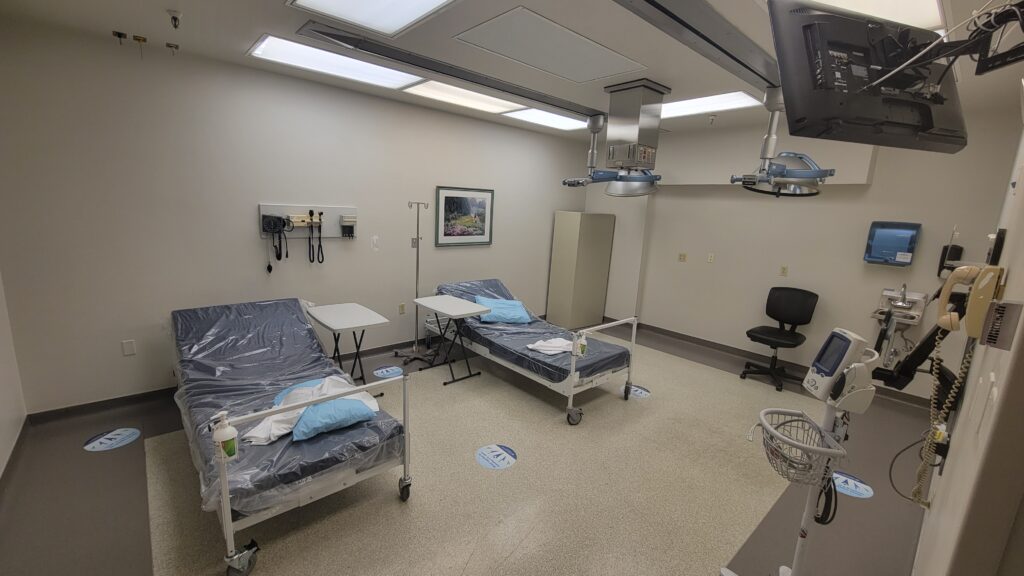ST. GEORGE — The military is coming to the rescue to help Southern Utah’s hospitals deal with a shortage of personnel to handle patients who can be saved from the intensive care unit, or even death, with the only approved treatment to battle COVID-19.

By this weekend, a monoclonal antibody infusion clinic will open on the original site in St. George of what was once Dixie Regional Medical Center and is now known as St. George Regional Hospital.
The news comes as the final approval from the Centers for Disease Control came through that will allow children between 5 and 11 to receive the Pfizer COVID-19 vaccine. The Southwest Utah Public Health Department said it won’t be providing the under 12 vaccinations until early next week.
Military provides staffing fix for antibodies clinic
Like with the vaccine, the Utah Department of Health said that the clinic will be providing the antibody treatments free of charge. This is a big change from what locals have been seeing where monoclonal antibody treatments have potentially added thousands of dollars to their medical bills.
The clinic, at 544 S. 400 East, will have 10 bays and is expected to provide up to 50 Southern Utah residents per day with infusions of monoclonal antibodies.
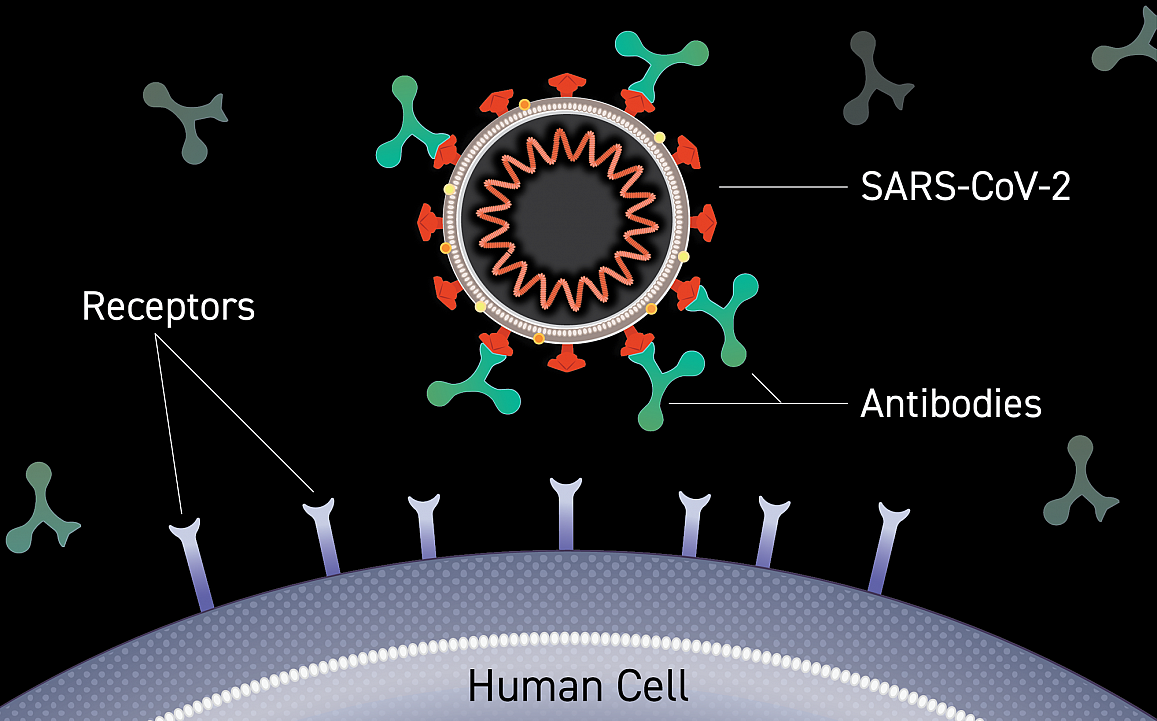
Monoclonal antibodies are currently the only treatment for COVID-19 to be approved by the Federal Drug Administration. Per the FDA, they are proteins made in a lab that mimic other antibodies. They attach to the SARS-CoV-2 virus that causes COVID-19 and then block the virus from attaching to human cells.
The clinic, which is expected to open up between Thursday and Friday, will initially operate from 8 a.m. to 5 p.m., Monday to Friday, though officials said hours may be expanded daily and to the weekends if demand warrants it.
The clinic will not be a walk-up facility. People will need to either be referred from a doctor or an emergency room or can qualify by qualifying through an online form at this link. Only those with underlying medical conditions that put them at high risk of getting hospitalized from COVID-19 and are within seven days of the start of symptoms will qualify.
Working with Intermountain Healthcare, the parent of St. George Regional, the Utah Department of Health had hoped to open up a monoclonal antibody treatment clinic in St. George in mid-September. However, St. George Regional was already dealing with having enough personnel to handle the large number of COVID-19 patients and other patients that kept the hospital and its intensive care wards at or above capacity in the last three months. There wasn’t a nurse to spare to help man the clinic.

Brett Cross, director of specialty systems of care and education for the Utah Department of Health, told St. George News that’s where the military has come to the rescue.
“We have a disaster response team that I head up, all of those people come from the current health care system. If we take a nurse out of a hospital, that takes them off that floor or off that bedside to do this,” Cross said. “We requested through FEMA and went through the Department of Health and Human Services for additional support staff to help us execute this mission. And then the Department of Defense has come in to operate and help us run this site down here in St. George.”
Medics and other health personnel from multiple branches of the military will be manning the facility – including Army personnel from the midwest and Air Force medics from just two hours away at Nellis Air Force Base in Las Vegas.
One thing that has been almost as contagious as COVID-19 are conspiracy theories popping up on social media about secret plans to use COVID for a military takeover or a rash of other pieces of theories that federal, state and local health agencies say are false.
Cross is well aware that the appearance of military personnel clad in camouflage to manage a COVID treatment clinic might have on some people. He said that the Department of Defense personnel is there under the discretion of the Utah Department of Health. The state’s health department is in charge, he added, and the military personnel is only there because there are no other medical workers available to help.
“I think that we have to recognize that we’re like all Americans, regardless of what uniform or what we’re doing. We have a need here in the state of Utah to assist in delivering this antibody therapy that is saving lives. Pople are doing better. The chances of you dying are less,” Cross said.
“We want to help do everything we can do to mitigate the effects of coronavirus and the Department of Defence is one piece of that,” he added. “They, fortunately, have health care staff qualified, registered and people that can come in and assist with this.”

Air Force Maj. Laura Ivey-Glines, who comes out of Idaho’s Mountain Home Air Base, is heading the monoclonal antibody infusion team. While they have been dealing with COVID-19 on their own bases and in the field, she said this will be their first time working as the staff of a civilian operation.
Ivey-Glines said her team is there to be the needed hands for the clinic and nothing more. She compared the pandemic itself to a battle that these soldiers of health are taking on as a duty. And it’s not about bringing every soldier home, as much as making sure Southern Utahns still come home.
“This is the medical world’s war. This is our war. This is what we’ve trained to do. Our whole lives we have waited for our opportunity to stand out,” Ivey-Glines said. “We’re grateful for this opportunity to take care of the health of the citizens of St. George. Our goal is to alleviate the pressure that the ERs and the ICUs have seen so that we can get patients with COVID in here, get them treated and get them back home.”
The infusion team from the military includes one doctor, two nurse practitioners and around five nurses in a total staff of 15. That staff was on hand Wednesday training on the equipment in the area that was once the main entrance when the site was Dixie Regional Medical Center, and most recently was the location of infusion bays for cancer patients.
As for other treatments that have been mentioned as possibilities to fight COVID-19 – including ivermectin that has support on social media but some health experts say hasn’t been backed up by data – Cross said there is only one treatment that has FDA approval.
“As a government organization, we are not going to be giving anything that is not approved by the FDA,” Cross said.
A recent Canadian major study by several universities with more than 1,500 participants released in the last few weeks but still ongoing, known as the Together Trial, found that ivermectin had little to no effect on decreasing the chances of hospitalization and death from COVID-19 and that hydroxychloroquine, another drug popular on social media, actually made conditions worse.

A low-cost medication for depression that is similar to Prozac, fluvoxamine showed some promise. However, at this point, monoclonal antibodies are the sole treatment that has shown results in multiple studies according to health officials.
Unlike some infusions like chemotherapy and dialysis, antibody infusion is one-and-done. The treatment itself takes about two hours from start to finish. Besides intake, the infusion itself takes about 20 minutes followed by an hour of monitoring for any adverse effects.
Up until now, according to Cross, the antibody infusion had to be handled at the main hospital or at an infusion clinic, and usually at a cost to the patient. It’s also at the cost of the little patient and staff time the hospital has in the first place. And infusion clinics are already handling people needing other infusions for cancer and other diseases along with COVID-19.
“We’re able to segregate those that are that are COVID positive and making sure that the site is clean and that those people that are coming to their cancer treatments also aren’t exposed to chronic virus,” said Cross, who also mentioned the advantage to free up ERs.
“When you think about that, that’s two hours extra that they’re in a bed. And we all know that there’s limited beds and there’s limited availability across the state, especially here in the St George area,” he said. “And so we can free up that ER bed and we can give them back that two hours and that patient can come over here and get the infusion.”
Vaccines for children 5 to 11 approved
Late Tuesday, the CDC gave its final approval for children ages five to 11 to receive the Pfizer COVID-19 vaccine.
While the vaccine itself is the same mRNA vaccine that has been received by millions nationwide and thousands in Southern Utah, the pediatric doses will come in their own vials and smaller dosages.
Dr. Michelle Hofmann, deputy director of the Utah Department of Health, said during a Zoom conference with reporters Wednesday that over the next week or so, the pediatric doses will be a little harder to come by and will more likely be available through local health departments, as they have been prioritized for the dosages.

In the case of the Southwest Utah Public Health Department, spokesperson David Heaton said the first dosages won’t be available until next week.
“The openings start next week but will be able to schedule on our website by the end of this week,” Heaton said.
He added that a big change for the pediatric appointments is that recipients will have to be accompanied by a legal guardian with identification.
A protest with a couple of dozen protesters took place near Town Square Park Wednesday morning organized by a group against most vaccines, including the vaccines for COVID-19.
In response to a question from St. George News, state epidemiologist Dr. Leisha Nolen said the initial goal is to reach the parents who have been seeking the vaccine for their children.
“The protesters I think represent a small amount of the population. It gets a lot of press but doesn’t represent the majority of the population,” Nolen said, who was echoed by Utah Department of Health Executive Director Nate Checketts.
“We’re going to support the families ready and willing to get the medicine for their children as soon as possible,” he said.
Getting the COVID-19 vaccine
- Those who can currently get the first dose of the vaccine: Everyone ages 5 and over. Those 5-18 can only receive the Pfizer vaccine. Use vaccinefinder.org to find clinics that have the Pfizer vaccine.
- Those who can receive the second dose: Those who received their first injection 28 days or more before the appointment time.
- Those who can receive a booster dose: Those who received Pfizer or Moderna at least six months ago and are 65 or older or 18+ with underlying health conditions or high-risk occupations. Those who received Johnson & Johnson at least two months ago and are 18 or older. Booster shots can be of any form of COVID-19 vaccine.
- The Southwest Utah Public Health Department is currently online appointment only. Some pharmacies and stores are offering walk-up appointments. Check the links below before going.
- Must wear a short-sleeve shirt at appointment and should have a personal ID.
- Vaccines are free of charge.
Washington County:
Where: Southwest Utah Public Health Department St. George office, 620 S. 400 East, St George
For hours and more information, including pediatric appointments set to start Nov. 8: Click here
Iron County:
Where: Southwest Utah Public Health Department Cedar City office, 260 DL Sargent Dr., Cedar City, 84721.
For hours and more information, including pediatric appointments set to start Nov. 8: Click here
Kane County:
Where: Southwest Utah Public Health Department Kanab office, 445 N. Main St., Kanab.
For hours and more information, including pediatric appointments set to start Nov. 8: Click here
Garfield County:
Where: Southwest Utah Public Health Department Panguitch office, 601 Center St., Panguitch.
For hours and more information, including pediatric appointments set to start Nov. 8: Click here
Beaver County:
Where: Southwest Utah Public Health Department Beaver Office, 75 1175 North, Beaver.
For hours and more information, including pediatric appointments set to start Nov. 8: Click here
St. George Regional Hospital/Intermountain Healthcare:
Where: 400 East Campus St. George Regional Hospital, 544 S. 400 East, St. George.
Reservations: Click to register
FourPoints Health:
Where: Various locations.
For hours and more information:: Click here
Revere Health:
Where: Revere Health Campus, 2825 E. Mall Drive, St. George.
Reservations: Call (435) 673-6131 to determine if vaccine is available.
Albertsons:
Where: 745 N Dixie Dr in St. George and 915 Red Cliffs Dr. in Washington City.
Reservations: Click to register
Harmons:
Where: 1189 E. 700 South in St. George and 3520 Pioneer Parkway in Santa Clara.
Reservations: Click to register
Lin’s Marketplace:
Where: 1930 W. Sunset Blvd. and 2928 E. Mall Drive in St. George, 1120 State St. in Hurricane and 150 N Main St. in Cedar City.
Reservations: Click to register
Smith’s Food and Drug:
Where: 20 N. Bluff St. and 565 S. Mall Drive in St. George and 633 S. Main St. in Cedar City.
Reservations: Click to register
Target:
Where: 275 S River Rd. in St. George.
Reservations: Click to register
Walmart:
Where: 2610 Pioneer Rd. in St. George, 625 W. Telegraph St. in Washington City, 180 N. 3400 West in Hurricane and 1330 S. Providence Center Dr. in Cedar City.
Reservations: Click to register
Family pharmacies:
Where: Several locations
Reservations: Use vaccinefinder.org to find a location near you
Southern Utah coronavirus count (as of Wednesday, according to Utah Department of Health)
Positive COVID-19 tests: 41,408 (7-day average of 97 per day, down 2.7% in last week)
Active cases: 1,820 (rising since Oct. 29)
- Washington County (High in Transmission Index): 422.40 per 100K rate in 14 days, rising since Oct. 21
- Iron County (High): 727.58, steady
- Kane County (High): 291.66, rising
- Garfield County (High): 613.74, steady
- Beaver County (High): 938.90 rising
Hospitalized: 44 (falling)
Deaths: 411 (10 since Oct. 29)
New infections per day in Southern Utah:
- Friday (Oct. 29): 131
- Saturday (Oct. 30): 114
- Sunday (Oct. 31): 52
- Monday (Nov. 1): 57
- Tuesday (Nov. 2): 91
- Wednesday (Nov. 3): 105
Current Utah seven-day average: 1,469 (falling)
Fully vaccinated in Southern Utah: 111,821 (44.4% fully vaccinated, +0.3% since Oct. 29)
- St. George: 48.29% fully vaccinated (+0.26%)
- Cedar City: 39.57% (+0.26%)
- Washington City: 44.37% (+0.34%)
- Ivins/Santa Clara: 50.6% (+0.21%)
- Hurricane/LaVerkin: 37.51% (+0.28%)
- Enterprise/Veyo/Springdale/Hildale: 43.08% (+0.33%)
- Beaver/Garfield/Kane counties: 42.48% (+0.4%)
Southern Utah schools active COVID-19 infections (as of Wednesday, according to Utah Department of Health)
NOTE: Utah Department of Health currently provides only ranges of the number of infections in each district, rather than exact figures. Figures may be an overall undercount as not all infections among students are reported to the state.
-
- Washington County School District: 56 to 119 (rising since Oct. 29)
- Iron County School District: 28 to 52 (steady)
- Kane County School District: 1-4 (steady)
- Garfield County School District: 2-8 (steady)
- Beaver County School District: 2-8 (falling)
- Southwest Utah Charter Schools: 5-20 (rising)
- Southwest Utah Private Schools: 0 (steady)
Schools in yellow (In danger of moving to test-to-stay): None
Schools in red (Students/staff must test negative to attend): None
Top 5 schools: Snow Canyon High (Washington) 9 active infections, Pine View High (Washington) 9, Canyon View High (Iron) 8, Canyon View Middle (Iron) 7, Fossil Ridge Intermediate (Washington) 7.
COVID-19 information resources
St. George News has made every effort to ensure the information in this story is accurate at the time it was written. However, as the situation and science surrounding the coronavirus continues to evolve, it’s possible that some data has changed.
Check the resources below for up-to-date information and resources.
- Centers for Disease Control and Prevention
- World Health Organization
- Utah Department of Health
- Safe Southern Utah
- Información sobre coronavirus en español
- Intermountain Healthcare
- To Donate and Volunteer to Help
Photo Gallery
Personnel from the U.S. Department of Defence train with Utah Department of Health officials to handle monoclonal antibody infusion equipment as part of the opening of a Utah Department of Health COVID-19 antibody clinic, St. George, Utah, Nov. 3, 2021 | Photo by Chris Reed, St. George News Personnel from the U.S. Department of Defence train with Utah Department of Health officials to handle monoclonal antibody infusion equipment as part of the opening of a Utah Department of Health COVID-19 antibody clinic, St. George, Utah, Nov. 3, 2021 | Photo by Chris Reed, St. George News Personnel from the U.S. Department of Defence train with Utah Department of Health officials to handle monoclonal antibody infusion equipment as part of the opening of a Utah Department of Health COVID-19 antibody clinic, St. George, Utah, Nov. 3, 2021 | Photo by Chris Reed, St. George News Personnel from the U.S. Department of Defence train with Utah Department of Health officials to handle monoclonal antibody infusion equipment as part of the opening of a Utah Department of Health COVID-19 antibody clinic, St. George, Utah, Nov. 3, 2021 | Photo by Chris Reed, St. George News Personnel from the U.S. Department of Defence train to handle monoclonal antibody infusion equipment as part of the opening of a Utah Department of Health COVID-19 antibody clinic, St. George, Utah, Nov. 3, 2021 | Photo by Chris Reed, St. George News Personnel from the U.S. Department of Defence train with Utah Department of Health officials to handle monoclonal antibody infusion equipment as part of the opening of a Utah Department of Health COVID-19 antibody clinic, St. George, Utah, Nov. 3, 2021 | Photo by Chris Reed, St. George News Some of the monoclonal antibody infusion stations at the Utah Department of Health COVID-19 antibody clinic, St. George, Utah, Nov. 3, 2021 | Photo by Chris Reed, St. George News Personnel from the U.S. Department of Defence train with Utah Department of Health officials to handle monoclonal antibody infusion equipment as part of the opening of a Utah Department of Health COVID-19 antibody clinic, St. George, Utah, Nov. 3, 2021 | Photo by Chris Reed, St. George News Personnel from the U.S. Department of Defence train with Utah Department of Health officials to handle monoclonal antibody infusion equipment as part of the opening of a Utah Department of Health COVID-19 antibody clinic, St. George, Utah, Nov. 3, 2021 | Photo by Chris Reed, St. George News A monoclonal antibody infusion station at the Utah Department of Health COVID-19 antibody clinic, St. George, Utah, Nov. 3, 2021 | Photo by Chris Reed, St. George News A monoclonal antibody infusion station at the Utah Department of Health COVID-19 antibody clinic, St. George, Utah, Nov. 3, 2021 | Photo by Chris Reed, St. George News A monoclonal antibody infusion station at the Utah Department of Health COVID-19 antibody clinic, St. George, Utah, Nov. 3, 2021 | Photo by Chris Reed, St. George News
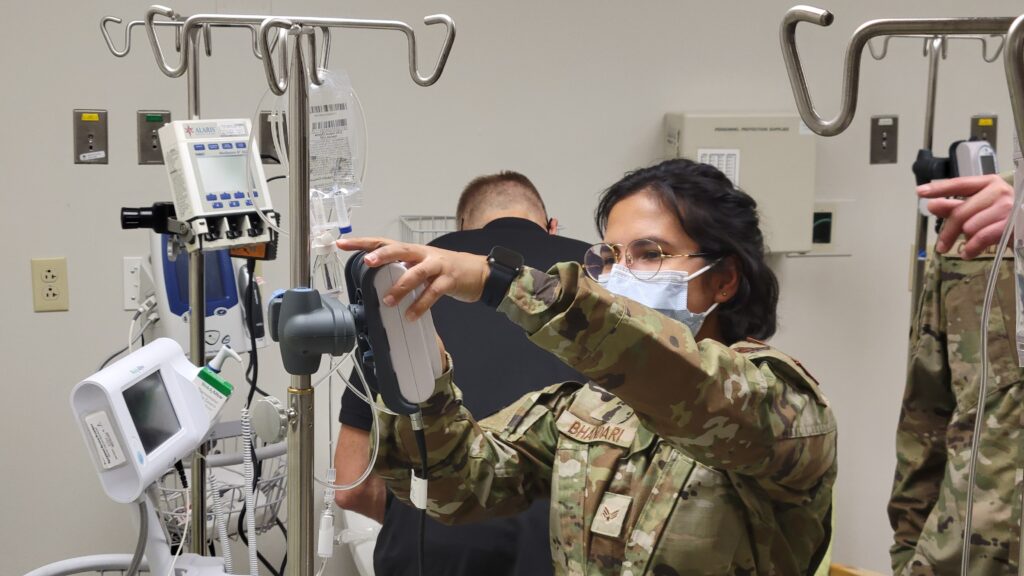


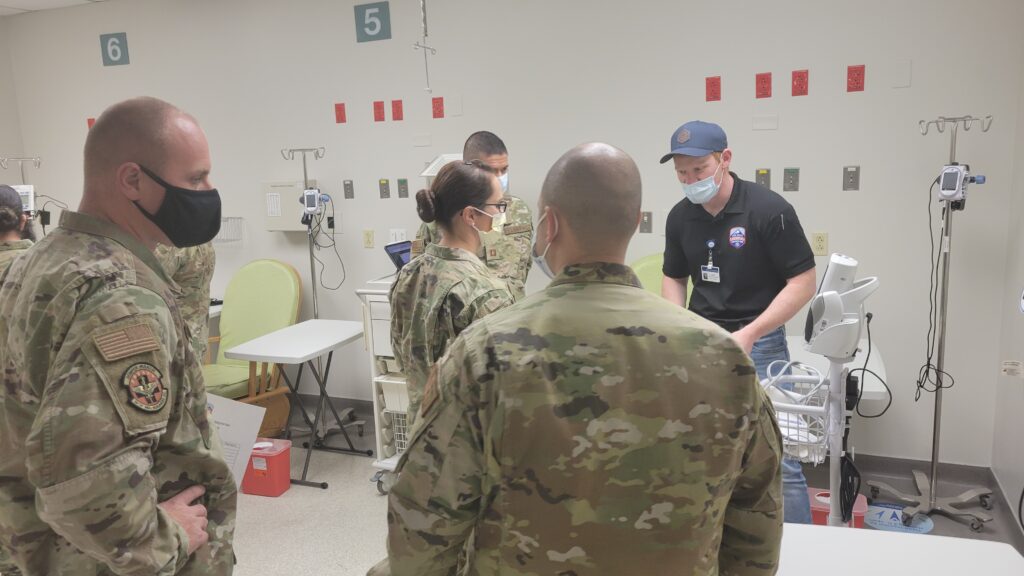
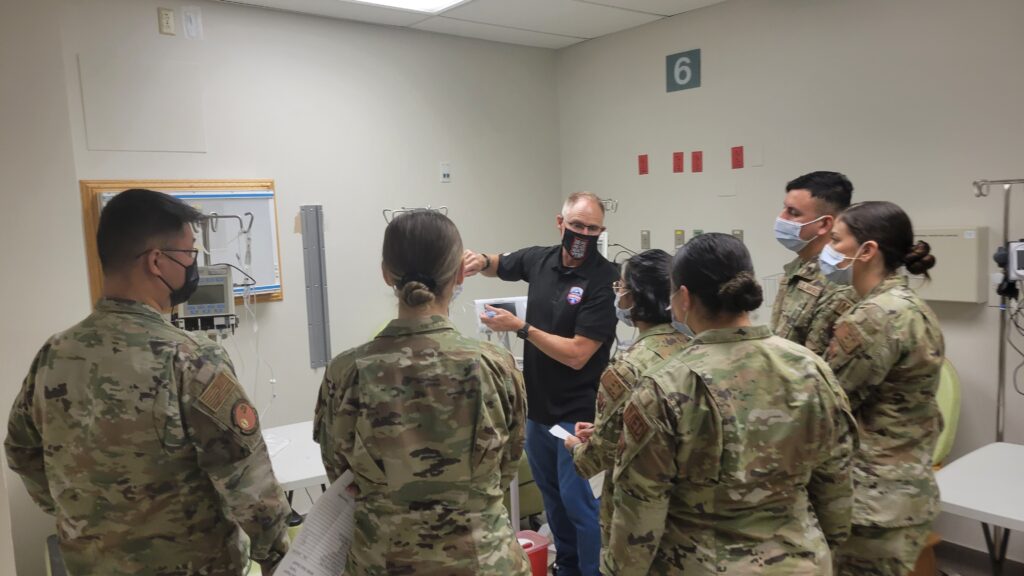


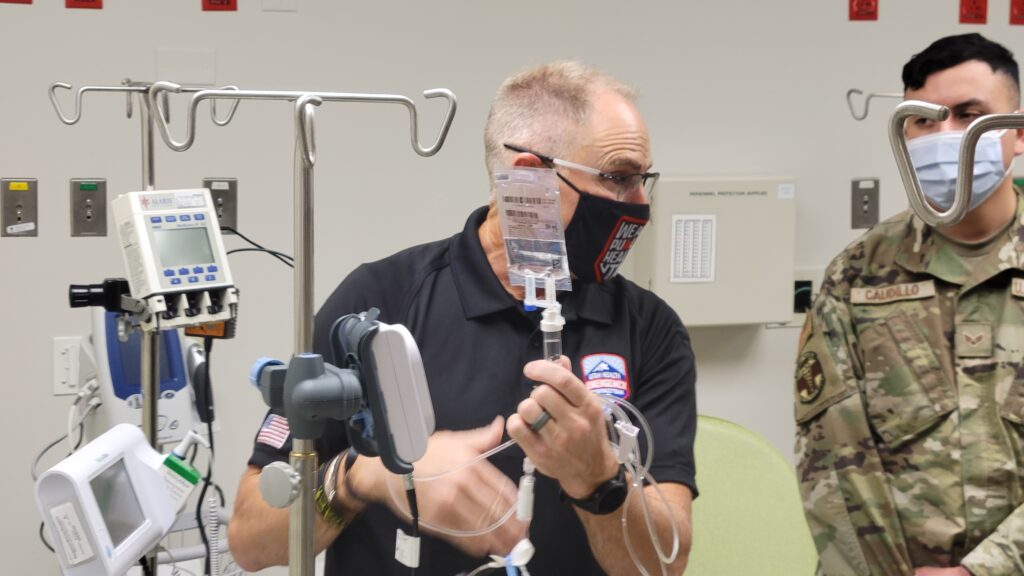
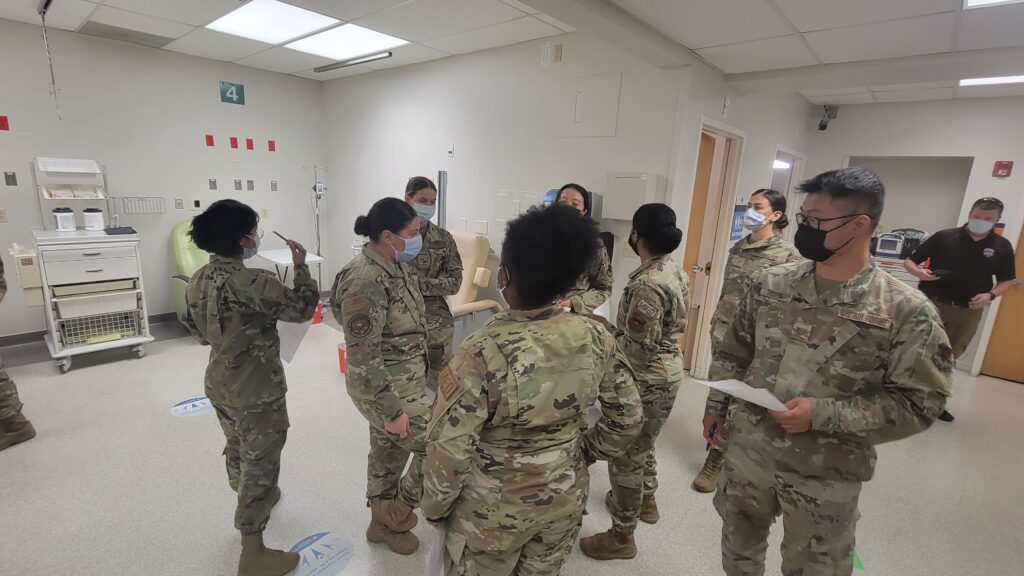
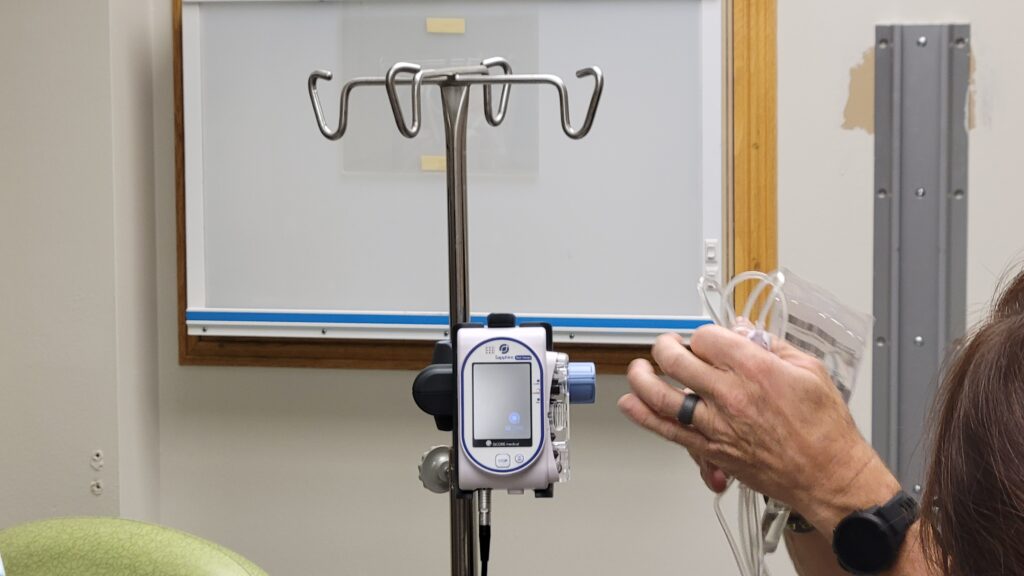

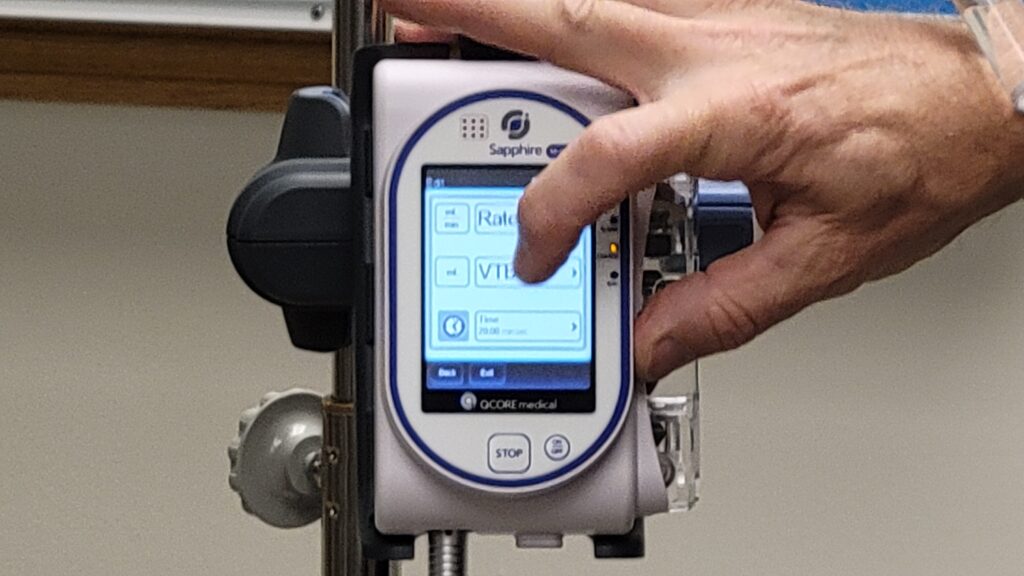
Copyright St. George News, SaintGeorgeUtah.com LLC, 2021, all rights reserved.

